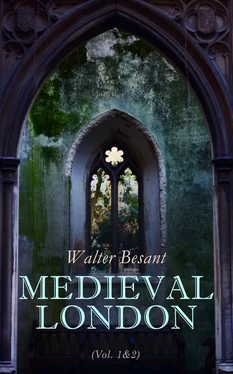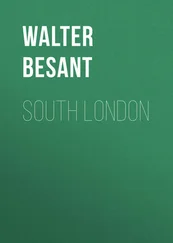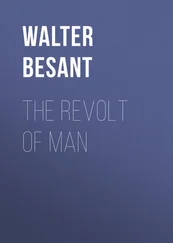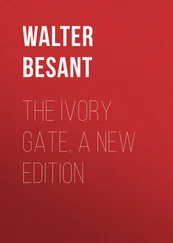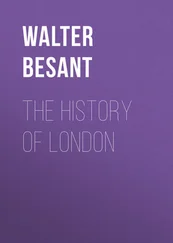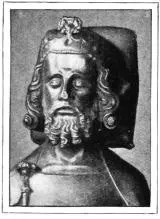
HEAD OF EDWARD II.
From effigy in Gloucester Cathedral.
The history of this miserable reign chiefly consists of the troubles caused by the King’s favourites. London, however, played a large part in the events arising out of their quarrels. In the autumn of 1308, the first year of the King’s reign, the Barons succeeded in getting Piers Gaveston banished. In 1309, however, he was back again and was made Earl of Cornwall, “to the great detriment of the realm” (French Chronicle). The indignation of the Barons waxed daily greater against the favourite, who lavished the wealth that was heaped upon him in ostentation and display. We must remember the strong feeling of the time that rank should be marked by such display as we now call ostentation. An Earl, for instance, was expected to carry about with him a great retinue; to wear costly armour; to give his followers a rich livery; and to keep up a noble house. But Piers Gaveston, whatever rank the King had conferred upon him, was a foreigner and an upstart, the son of a simple Gascon knight. That he was enabled to exhibit the display which befitted an ancient House made the nobles recall his origin. Besides, the man had a ready wit and a keen tongue. He gave every one of the Barons a nickname. Lancaster was the “old hog” or the “churl”; Gloucester the “cuckold’s bird” or the “Bastard”; Lincoln was “Bursten bellie”; Pembroke was “Joseph the Jew”; Warwick was the “Black hound of Arderne”; and so with the others.
There had been trouble about this favourite in the late King’s reign. In 1305, as we have seen, Edward put his son in prison for riotously breaking into a Bishop’s park, “and because the Prince had done this deed by the procurement of a lewd and wanton person, one Piers Gaveston, an Esquire of Gascoine; the King banished him the nation, lest the Prince, who delighted much in his company, might, by his evil and wanton counsel, fall to evill and naughtie rule.” (Holinshed.)
The first thing the new King did, then, was to recall his favourite and to create him Earl of Cornwall. He also married him to his niece, the daughter of his sister Joan, and of Gilbert de Clare, Earl of Gloucester.
The favourite repaid these favours as might be expected. He furnished the Court, Holinshed says, with “companies of jesters, ruffians, flattering parasites, musicians, and other vile and naughtie ribalds, that the King might spend both daies and nights in jesting, plaieng, blanketing, and other filthie and dishonourable exercises.”
How the Barons remonstrated with the King; how they took Gaveston prisoner under promise to deliver him to the King; how they broke that promise and beheaded him, is to be read in every history of England.
It is noted by Sharpe as one reason for the hatred which the citizens of London as well as the Barons felt towards this and the following favourites, that they were always soliciting small favours from the citizens for their own friends. “At one time,” he writes, “it was Piers Gaveston who wanted a post for his valet: at another time Hugh le Despenser asked for the Small Beam for a friend.”
It was before this, however, that the Barons appointed “ordainers” to draw up ordinances for the better government of the City. When their work was completed it was laid before a Parliament which assembled at the Black Friars, and here it received sanction. The ordinances were afterwards proclaimed at St. Paul’s Cross.
In March 1311 the City gave the King the sum of 1000 marks. The Mayor, Richard de Refham, who belonged to the popular party, caused an examination of all the charters and documents concerning the City liberties. He then read them publicly, and asked the people if they were resolved upon the maintenance of their liberties. He also took steps to clear the streets of the night-walkers and “roreres” who for a long time had committed murders and robberies unchecked. The entries in Riley’s Memorials of London under the year 1311 show the activity of this Mayor’s reign. He would tolerate no abusive language in his Court; he would not allow trades which were a nuisance to be carried on in the street, such as the skinning of dead horses, the dressing of fur, etc.; he arrested and committed to prison a great number of rogues, criminals, and strumpets. He strengthened and guarded the Gates, keeping a night watch of sixteen men for every one. Perhaps his activity made enemies, for he was deposed before his term of office had expired. The French Chronicle, however, says nothing about any deposition.
In November 1312 a son was born to the King, named Edward of Windsor. The following account shows how such an event was received and celebrated by the loyal citizens:—
The Queen herself sent a letter to the citizens.
“Isabel by the grace of God, Queen of England, Lady of Ireland, and Duchess of Aquitaine, to our well-beloved, the Mayor, and Aldermen, and the Commonalty of London, greeting. Forasmuch as we believe that you would willingly hear good tidings of us, we do make known to you that our Lord in His grace has delivered us of a son, on the 13th day of November with safety to ourselves, and to the child. May our Lord preserve you. Given at Wyndesore, on the day above-named.”
“Of this letter the bearer was John de Phalaise, tailor to the Queen: and he came on the Tuesday next after the feast of St. Martin (November 11) in the 6th year of the reign of King Edward, son of King Edward. But as the news had been brought by Robert Oliver on the Monday before, the Mayor and Aldermen, and great part of the Commonalty, assembled in the Guildhall at time of Vespers and carolled, and showed great joy thereat; and so passed through the City, with glare of torches, and with trumpets and other ministrelsies.
And on the Tuesday next, early in the morning, cry was made throughout all the City to the effect that there was to be no work, labour, or business in shop, on that day; but that every one was to apparel himself in the most becoming manner that he could, and come to the Guildhall at the hour for Prime: ready to go with the Mayor, together with other good folks, to St. Paul’s there to make praise and offering, to the honour of God, who had shown them such favour on earth, and to show respect for this child that had been born. And after this, they were to return all together to the Guildhall, to do whatever might be enjoined.
On the Wednesday following, the Mayor, by assent of the Aldermen, and of others of the Commonalty, gave to the said John de Phalaise, bearer of the letter aforesaid, ten pounds sterling and a cup of silver, four marks in weight. And on the morrow, this same John de Phalaise sent back the present aforesaid because it seemed to him too little.
On the Monday following, the Mayor was richly costumed, and the Aldermen arrayed in like suits of robes; and the drapers, mercers, and vintners were in costume; and they rode on horseback thence to Westminster, and there made offering, and then returned to the Guildhall, which was excellently well tapestried and dressed out, and there they dined. And after dinner they went in carols throughout the City all the rest of the day, and great part of the night. And on the same day the Conduit in Chepe ran with nothing but wine for all those who chose to drink there. And at the Cross just by the Church of St. Michael in West Chepe, there was a pavilion extended in the middle of the street, in which was set a tun of wine, for all passers-by to drink of, who might wish for any.”
In 1313 an important case was argued before the Royal Council sitting at the White Friars. The King had issued orders for a tallage which the City refused to pay on various grounds, but especially on the ground that their charters granted them exemption from tallage. By lending the King £1000 they obtained a postponement of the question till the meeting of Parliament. When Parliament did meet, eighteen months later, they obtained a further postponement by another loan of £400, part of which was devoted to the equipment of 120 men for the Scottish war.
Читать дальше
